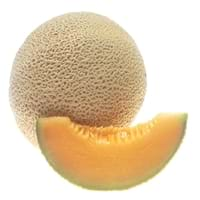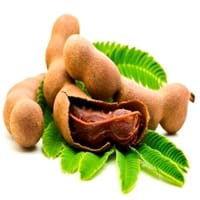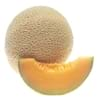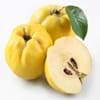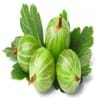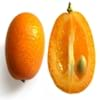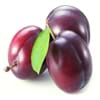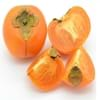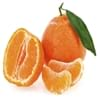Health Benefits
Cancer prevention, Heart care, Improves eye vision, Prevents diabetes, Reduces stress
Boosts immune system, Boosts respiratory health, Cancer prevention, Digestive aid, Piles treatment
General Benefits
Boosts immune system, Cures cough, Cures fever, Digestive aid, Eye care, Helps in weight loss
Beneficial in improving nerve function, Protects against parasites and worms, Relieves pain
Skin Benefits
Anti-aging benefits, Hydrates skin, Skin rejuvenation, Treatment of skin diseases
Anti-aging benefits, Brightens and lightens complexion, Exfoliates skin, Hydrates skin, Treatment of dark spots
Hair Benefits
Good conditioner, Prevents hair loss, Protects hair
Prevents hair loss
Allergy Symptoms
Abdominal pains, Anaphylaxis, Breathing difficulty, Diarrhea, Dizziness, Hives, Itching of mouth, Nasal congestion, Nausea, Vomiting
Abdominal pains, Breathing difficulty, Dizziness, Eczema, Fainting, Hives, Itching, Nasal congestion, Swelling of face, Tingling sensation in mouth, Vomiting
Side Effects
Allergic reaction, Bloating, Indigestion
Decrease in blood sugar levels, Induces acid reflux, Allergic reaction, Tooth decay, May form gallstones
Best Time to Eat
As a snack in the late afternoon, Don't consume at night and before bed, Eat the fresh ones, avoid mixing with any other foods, don't eat after meal., Morning time (before lunch)
Along with meal, As a snack in the late afternoon, Don't consume at night and before bed, Strictly avoid empty stomach
Vitamin B5 (Pantothenic Acid)
Vitamin C (Ascorbic Acid)
Vitamin K (Phyllochinone)
Calories in Fresh Fruit with Peel
Not Available
Not Available
Calories in Fresh Fruit without Peel
Calories in Canned Form
Not Available
Not Available
Season
Summer
Spring, Summer
Varieties
Hales Best Jumbo, Sweet 'N Early Hybrid, Hearts of Gold, Ambrosia, Athena, Honey Bun Hybrid, Fastbreak and Superstar
PKM 1, Urigam, Hasanur, Tumkur prathisthan, DTS 1 and Yogeshwari
Color
Orange
Brown, Reddish-brown
Inside Color
Creamy Orange
Brown
Shape
Round
Curving Cylinder
Taste
Juicy, Musky, Sweet
Sour-Sweet
Origin
Africa, India
Africa
Soil Type
Sandy
Loam, Sandy, Sandy loam, Well-drained
Climatic Conditions
Dry, Hot
Humid to dry, Rainfall, Warm to hot climate
Facts about
- Cantaloupe is known as rock-melon in some parts of the world.
- Christopher columbus first introduced cantaloupes to north america in 1494.
- The name 'Cantaloupe' as it is cultivated in papal gardens of cantaloupes, Italy.
- Tamarind is used to prevent body odor.
- African children use the tamarind seeds in games.
- No cases of tamarind toxicity or allergy reported till date.
Other Countries
Iran, Romania, Turkey, United States of America
Africa, Australia, Brazil, China, Mexico, Nigeria, Sudan, Taiwan
Top Importer
United States of America
United States of America
Top Exporter
Spain
Thailand
Botanical Name
Cucumis melo var. cantalupensis
Tamarindus indica
Synonym
Cucumis melo var. reticulatus
Tamarindo, tamarindus
Subkingdom
Tracheobionta
Tracheobionta
Division
Magnoliophyta
Magnoliophyta
Class
Magnoliopsida
Liliopsida
Subclass
Dillenhidae
Rosidae
Order
Cucurbitales
Fabales
Family
Cucurbitaceae
Fabaceae
Species
C. melo
Tamarindus indica
Generic Group
Gourd
Tamarind Sub
Compare Cantaloupe and Tamarind
It is important compare Cantaloupe and Tamarind as both the fruits have a different nutritional value. Their comparison can be done on the basis of their vitamin and mineral content, calories, benefits as well as characteristics, making it easier for us to choose the best fruit for our diet. Their general health benefits are as follows:
Cantaloupe Benefits: boosts immune system, cures cough, cures fever, digestive aid, eye care and helps in weight loss.
Tamarind Benefits: beneficial in improving nerve function, protects against parasites and worms and relieves pain.
Fruits are also used as a remedy for various hair problems. The hair benefits of Cantaloupe are: good conditioner, prevents hair loss and protects hair and hair benefits of Tamarind are: prevents hair loss. Some fruits are known to cause allergic reactions. The allergy symptoms of first fruit are: abdominal pains, anaphylaxis, breathing difficulty, diarrhea, dizziness, hives, itching of mouth, nasal congestion, nausea and vomiting and the symptoms of second fruit are: abdominal pains, breathing difficulty, dizziness, eczema, fainting, hives, itching, nasal congestion, swelling of face, tingling sensation in mouth and vomiting. Get sorted Cantaloupe vs Tamarind comparison with the help of fruit comparison tool by fruitvs.com.
